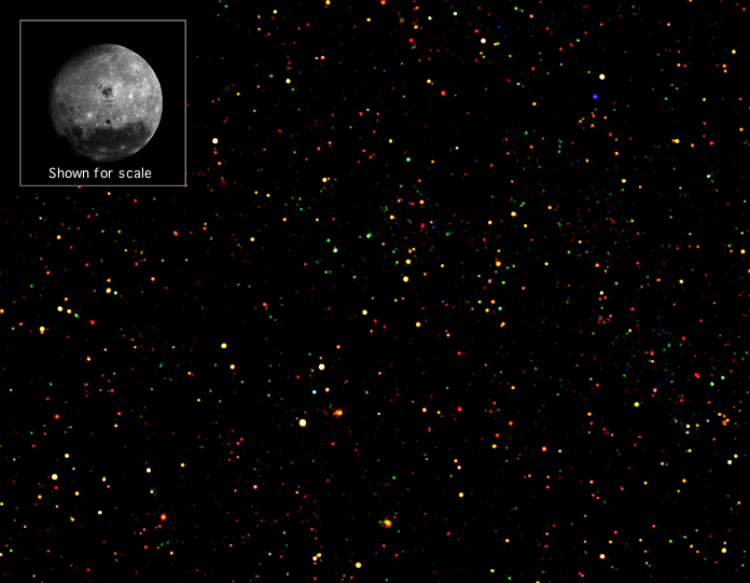
 Credit: X-ray: NASA/CXC/CfA/R.Hickox et al.; Moon: NASA/JPL
Credit: X-ray: NASA/CXC/CfA/R.Hickox et al.; Moon: NASA/JPL
A Sky Full of Holes
The sky is full of holes. Black holes. At least that's the conclusion a recent map of a large region of the sky by the Chandra X-ray Observatory. This wide area survey of a region of the sky in the Bootes constellation, shown above, is about 40 times larger than the full moon. This survey, though wide, is not too deep - so it reveals only the brightest X-ray sources, mostly supermassive black holes at the centers of active galaxies. The colors of the sources in the image represent the X-ray energy of each source; blue dots are high-energy X-ray sources, either because they are intrinsically energetic or because their low energy emission is heavily absorbed. Red dots are either sources that have little high energy emission, or very little material to absorb their low energy emission. The Chandra data help astronomers test the "unified model" of active galactic nuclei, which ascribes difference in the properties of active galaxies to a single effect: the inclination angle between the observer's viewpoint and the obscuring disk around the supermassive black hole. Simplicity is beauty.
<
HEA Dictionary ● Archive
● Search HEAPOW
● Other Languages
● HEAPOW on Facebook
● Download all Images
● Education ● HEAD
>
Each week the HEASARC
brings you new, exciting and beautiful images from X-ray and Gamma ray
astronomy. Check back each week and be sure to check out the HEAPOW archive!
Page Author: Dr. Michael F. Corcoran
Last modified Monday, 26-Feb-2024 17:10:01 EST


